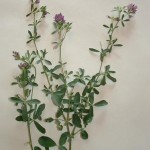by Catherine Haug, April 3, 2013
(photo, right, from Wikipedia)
Two years ago, on January 27, 2011, the USDA approved Roundup-Ready GMO alfalfa for planting. You can view this history and read pertinent documents on the USDA’s Roundup-Ready Alfalfa website.
Originally, USDA Chief Vilsak had assured Organic growers that there would be restrictions on how close this new crop could be planted to Organic alfalfa fields, but he did not follow through with that promise; instead, he gave a green light to unrestricted planting of this crop. See Grist: In a stunning reversal, USDA chief Vilsack greenlights Monsanto’s alfalfa from Jan 2011.
What does this mean for Flathead farmers and ranchers? What does this mean for those who raise a dairy cow or goat for the family milk? (more…)

